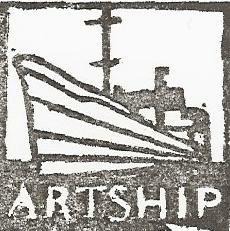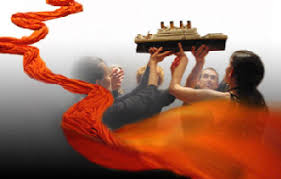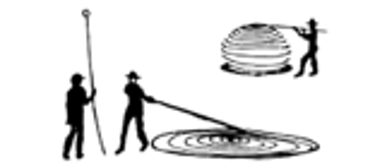Artship Initiatives
History of Cultures and Culture Making.
Artship Scholarly Research feeds the contemporary cultural/educational practice






Artship Scholarly Research feeds the contemporary cultural/educational practice
Artship
By 1993, the success of the Windows Project prompted Paich and the Augustino Dance Theater members to meet at the Waterfront Plaza Hotel in Jack London Square to collaborate and discuss the concept of using Jack London Square as a cultural hub for further art and performance projects, and the idea of an international floating art museum and performance space was conceived. The theater company changed its name to the Artship Foundation and reorganized around the idea of centering community arts initiatives in a decommissioned WWII Merchant Marine ship that would be docked at the Grove Street Pier at 1 Market Street in Downtown Oakland, a short walk from Jack London Square. After years of planning, in 1998, the US Congress and President Bill Clinton authorized the transfer of a former California Maritime Academy training ship, The Golden Bear, to the Artship Foundation. For five years, the renamed Artship was docked at Oakland's 9th Avenue Terminal, where it became the center for Artship Ensemble performances, hosted local art exhibitions, and was a hub for the International Peace University, of which Paich became co-director of Arts and Culture in 1995. The ship itself needed significant and costly repairs before it could be seaworthy, however, before the foundation could raise the millions of dollars needed for repairs, the City of Oakland sued the foundation, and in 2004, the ship was forcibly returned to the US Maritime Administration.After the Artship Foundation lost the ship, Paich relocated to a small studio apartment on Perry Street in San Francisco while continuing to nurture the work of the Artship Ensemble and giving public performances. Between 2001 and 2021, Paich directed twenty-nine original narrative performances. The Ensemble performed at San Francisco's ODC Theater, intimate urban theater spaces, in public parks, and community centers. Although several performances featured single narratives, most consisted of multiple short pieces, usually presented by different ensemble members, any of whom might combine traditional oral storytelling with dance, music, unconventional or repurposed costumes and props, and/or original visual artworks.In the autumn of 2012, Paich was accepted to an artist residency hosted by the halka art project,, a non-profit arts center in Istanbul. His rich collaborations and connections with the artists and community in Istanbul prompted Paich to return with greater frequency to Turkey, where he curated art exhibitions and organized and nurtured performances and research initiatives with the Istanbul community. Beginning in 2014, Paich annually invited and supported artists and performers from Turkey to exhibit and perform in the San Francisco Bay Area with the Artship Ensemble members in California, and he did the same for international artists to come to Istanbul to participate in performances and exhibitions with his Istanbul ensemble. Beginning in 2020, collaborate in virtual international performances via videoconferencing. The same year, Paich relocated to Istanbul, where he spent much of the year living and working.
Research Initiatives and Lecture Circuit
Paich presented numerous papers at international conferences as a keynote speaker and presenter based on his courses, lectures, and research since 1969, which address tangible and intangible heritage, comparative cultural studies and migration of peoples, craft technics, and ideas
Visual Art Practice
In Belgrade and London, Slobodan Dan Paich completed several personal, introspective, almost surreal paintings in egg tempera or oil on panel, but after his move to San Francisco, while directing, researching, and writing conference papers, Paich made a daily contemplative practice of drawing with tea and ink at the Samovar Tea House in the Yerba Buena Gardens and, several years later, at the Amber India Restaurant nearby, where he held a daily Stammtisch. After completing a drawing, he would usually scan it and email the image, with a title, to a friend or associate. While he might send the same image to several people, he never emailed them together, and sometimes he would change the title of the piece for the individual he sent it to. He continued this daily art-making practice until shortly before he died from cancer in November 2022, in Istanbul. At the time of his death, he had completed thousands of daily drawings, sometimes using diverse found media. Selections of his daily drawings were published in small volumes, beginning with Tea & Ink (2013).
